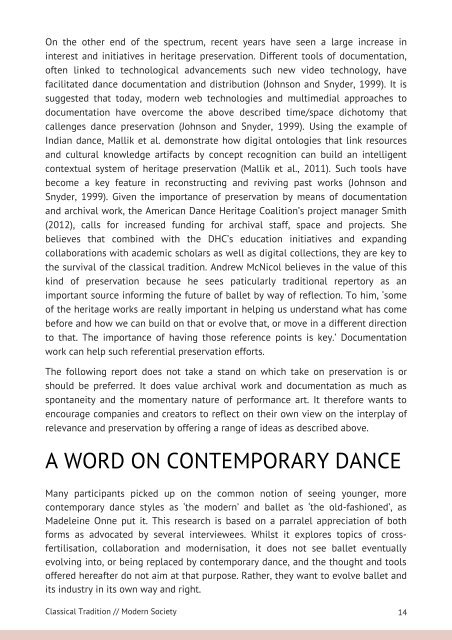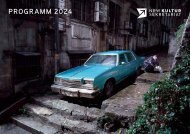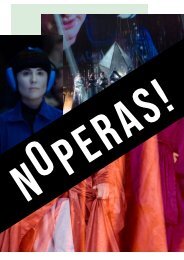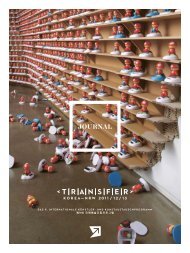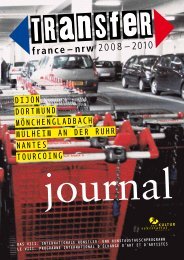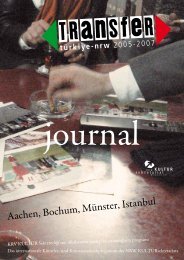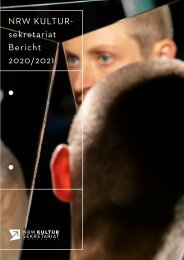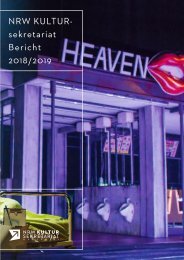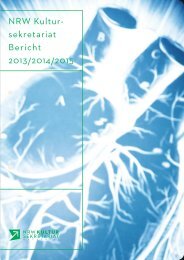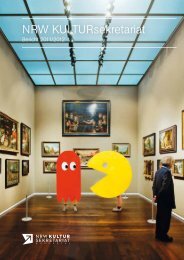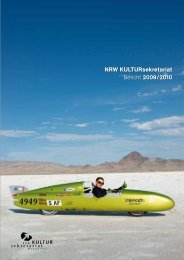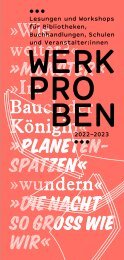Tanzrecherche NRW: Classical Tradition / Modern Society by Mirjam Otten
A handbook for creators and decision-makers on keeping classical ballet relevant
A handbook for creators and decision-makers on keeping classical ballet relevant
Create successful ePaper yourself
Turn your PDF publications into a flip-book with our unique Google optimized e-Paper software.
On the other end of the spectrum, recent years have seen a large increase in<br />
interest and initiatives in heritage preservation. Different tools of documentation,<br />
often linked to technological advancements such new video technology, have<br />
facilitated dance documentation and distribution (Johnson and Snyder, 1999). It is<br />
suggested that today, modern web technologies and multimedial approaches to<br />
documentation have overcome the above described time/space dichotomy that<br />
callenges dance preservation (Johnson and Snyder, 1999). Using the example of<br />
Indian dance, Mallik et al. demonstrate how digital ontologies that link resources<br />
and cultural knowledge artifacts <strong>by</strong> concept recognition can build an intelligent<br />
contextual system of heritage preservation (Mallik et al., 2011). Such tools have<br />
become a key feature in reconstructing and reviving past works (Johnson and<br />
Snyder, 1999). Given the importance of preservation <strong>by</strong> means of documentation<br />
and archival work, the American Dance Heritage Coalition’s project manager Smith<br />
(2012), calls for increased funding for archival staff, space and projects. She<br />
believes that combined with the DHC’s education initiatives and expanding<br />
collaborations with academic scholars as well as digital collections, they are key to<br />
the survival of the classical tradition. Andrew McNicol believes in the value of this<br />
kind of preservation because he sees paticularly traditional repertory as an<br />
important source informing the future of ballet <strong>by</strong> way of reflection. To him, ‘some<br />
of the heritage works are really important in helping us understand what has come<br />
before and how we can build on that or evolve that, or move in a different direction<br />
to that. The importance of having those reference points is key.’ Documentation<br />
work can help such referential preservation efforts.<br />
The following report does not take a stand on which take on preservation is or<br />
should be preferred. It does value archival work and documentation as much as<br />
spontaneity and the momentary nature of performance art. It therefore wants to<br />
encourage companies and creators to reflect on their own view on the interplay of<br />
relevance and preservation <strong>by</strong> offering a range of ideas as described above.<br />
A WORD ON CONTEMPORARY DANCE<br />
Many participants picked up on the common notion of seeing younger, more<br />
contemporary dance styles as ‘the modern’ and ballet as ‘the old-fashioned’, as<br />
Madeleine Onne put it. This research is based on a parralel appreciation of both<br />
forms as advocated <strong>by</strong> several interviewees. Whilst it explores topics of crossfertilisation,<br />
collaboration and modernisation, it does not see ballet eventually<br />
evolving into, or being replaced <strong>by</strong> contemporary dance, and the thought and tools<br />
offered hereafter do not aim at that purpose. Rather, they want to evolve ballet and<br />
its industry in its own way and right.<br />
<strong>Classical</strong> <strong>Tradition</strong> // <strong>Modern</strong> <strong>Society</strong> 14


